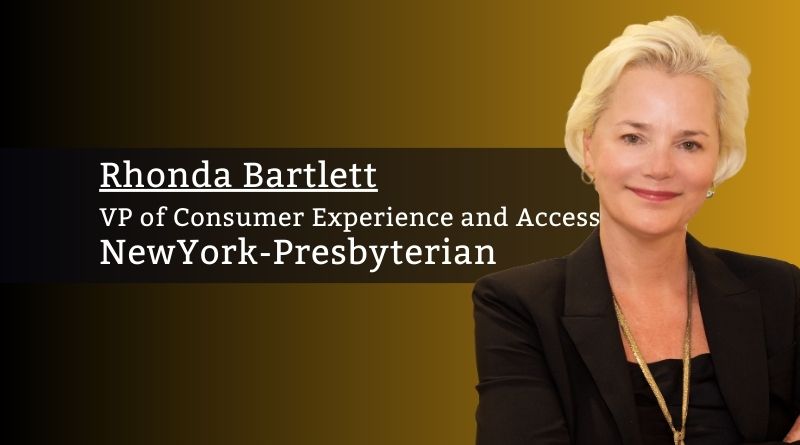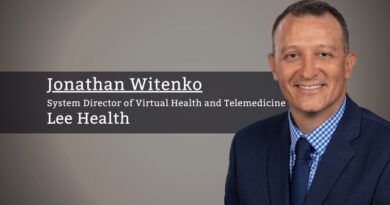Coordination is Key to Optimize Virtual Healthcare Services and Improve Access to Care
By Rhonda Bartlett, VP of Consumer Experience and Access, NewYork-Presbyterian
Advocating for our patients is at the heart of everything we do at NewYork-Presbyterian. From my own experience as an ICU nurse for over ten years, then working in digital services and now focusing on improving access to care, what motivates me and my team is our goal to help people get the healthcare they need as easily and seamlessly as possible. In today’s landscape, that means using virtual services to lower barriers and increase access to care among increasingly diverse populations. This requires aligning the strengths and combined potential of three healthcare domains that are too often siloed: operations, technology, and marketing & communications.
How do you bring these three domains together? Firstly, it begins with examining basic operations, such as telephone access or online scheduling, to create a more unified system. By rethinking the fundamentals, healthcare organizations can employ strategies to unify these spheres, establish successful programs, and deliver a better, more convenient experience for the patient.
Collaboration is key to continue to improve the virtual healthcare experience and expand access to quality care.
Operations
Supporting all patient populations begins with understanding the limitations of existing operational structures and removing barriers that interfere with access to care.
For example, phone calls are still a common point of entry into a healthcare organization for many customers. What are the limitations in operational structures that can create barriers over the phone, and how can those be addressed? Is the caller able to quickly get to the person or office they need to fulfill their healthcare needs?
Building virtual platforms with this in mind can help healthcare organizations identify where they may have gaps in coverage and how they can close those gaps. This can include not only developing contact centers capable of direct scheduling for patients or referral follow-ups, but also integrating clinical operations and services, such as virtual nursing, into the phone system to help escalate calls from patients who may have more urgent needs. If a patient tells a call center agent that they need to make an appointment because they are short of breath, the agent can quickly turn the call over to a triage nurse, who can determine the best course of action.
Creating more access points is one step, but that should go hand-in-hand with timelyaccess to care. A 2022 survey shows that in many major american cities, the average time it takes to schedule a new appointment is nearly one month, up 8% from 2017 and 24% from 2004. Healthcare organizations, as they improve access processes, can also look at clinical coverage and scheduling software to optimize their capacity for managing patients.
Central to positioning the organization to best serve the patient at every step of their healthcare journey is a commitment from leadership to invest in the people, processes, and tools to realize these goals.
Technology
Underlying any operational strategy is the technology that will make it work. Organizations should look to bolster and streamline key technologies, including artificial intelligence (AI), to ensure platforms are aligned, integrated, and optimized to support operational capabilities.
Sophisticated call centers can help improve access, but not every customer experience is going to start with a phone call. Online scheduling helps avoid phone calls, which is ultimately more efficient for an organization. But if the person needs additional help, often the suggestion is to call a contact center, creating a barrier for people who are deaf. As live chat and other technologies continue to evolve, this barrier can be lowered, highlighting the importance of using multiple communication channels to accommodate all patients.
Similarly, not every patient experience is going to start with the same language. An organization’s call centers should be able to recognize the various languages common in the community. A recent study found that language barriers can lead to miscommunication, reducing patient satisfaction and the quality of care. Improving access to care requires integrating with multi-language technologies and staff to accommodate all consumers.
The patient experience doesn’t end when the patient leaves the doctor’s office or hospital. Scheduling a follow-up appointment at the time of discharge makes it easier for patients to continue their healthcare journey; and where possible, virtual follow-ups should be considered. Furthermore, healthcare organizations can use remote patient monitoring (RPM) to observe a patient in between follow-up appointments. For example, at NewYork-Presbyterian, we monitor patients who have been treated and discharged after experiencing heart failure. Our clinical teams monitor blood pressure, weight, and other physiologic changes to determine if medication adjustment or treatment changes are required. Organizations that adopt similar technology can lower the need for frequent in-person visits while providing easier access to care.
Marketing & Communications
As the healthcare landscape is highly competitive in the virtual space, a strong and well-funded marketing and communications program is key to virtual growth. External communications platforms should be reevaluated and designed with diverse populations in mind, to support access and quality care for all patients and communities served.
Traditionally, brand advertising such as commercials and digital ads, along with sophisticated search engine optimization (SEO) strategies, have helped healthcare organizations drive consumers to their providers and services. With the increased reliance on telemedicine and virtual care, marketing and communications strategies should make it easy for consumers to connect to virtual care, with simple, straightforward messaging and pathways that prompt consumers to engage with you virtually. Community engagement and outreach offers another avenue to help connect people to virtual services.
A successful virtual services program in today’s fast-paced, highly competitive, and evolving healthcare landscape requires the creation of new, multifaceted capabilities built upon operations, technology, and marketing & communications. Collaboration is key to continue to improve the virtual healthcare experience and expand access to quality care.



